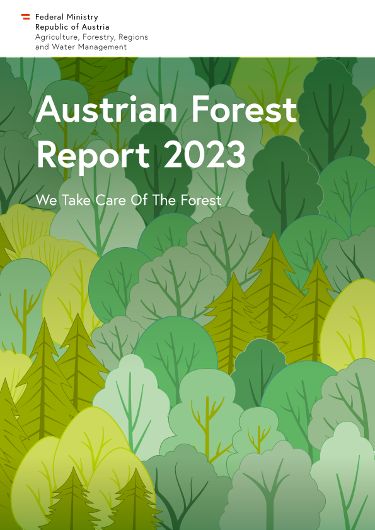Austrian Forest Report 2023
0.jpg/jcr:content/RHP_2404%20(1).jpg)
The Austrian Forest Report 2023 was published on March 21, 2023, International Forest Day, by the Federal Ministry of Agriculture, Forestry, Regions and Water Management (BML) and the Federal Forest Research Center (BFW).
Austrian Forest Report 2023 - We take care of the forest
What is the status of the Austrian forest? Who owns the forest? What are the current challenges and possible solutions? The Austrian forest report provides answers to these questions and more. It was published on March 21st 2023, International Forest Day, by the Federal Ministry of Agriculture, Forestry, Regions and Water Management (BML). The report was created by the Federal Forest Research Center (BFW) on behalf of the Federal Ministry.
Main topics and goals of the forest report
The focus of the report is divided into the chapters climate, biodiversity, economy and society. The forest report is aimed at the interested general public and appears on 64 pages in German and will also be available in English. Information is provided about the effects of the forest and it is made clear what challenges the forest ecosystem and forest managers face. The content and information are intended to further strengthen the understanding of sustainable forest management.
Forest and climate
This chapter describes the effects of climate change on the forest ecosystem, how the forests of the future will be shaped through adaptation and forest management, what role the forest plays in climate protection, how energy production from wood contributes to the renewable energy account and why protective forests, which are currently in... Austria plays a major role and faces major challenges.
Forest and biodiversity
The chapter Forest and Biodiversity deals with one of humanity's great global challenges – the preservation and strengthening of biodiversity. Species and structural diversity is promoted in Austria through correct management of forests. The report shows the positive development of the biodiversity index as well as measures that promote both climate fitness and nature conservation in Austria's forests. In order to preserve natural areas in the forest, around a third of the forest areas in Austria are protected.
Forest and economy
How the training opportunities and jobs in the forestry sector are determined, what prospects arise and how wood is used sustainably are the content of this part of the forest report, in addition to the topics of regional value creation, data and figures from the trade sector as well as current BML initiatives. The digitization of the forest and the new possibilities associated with it are also mentioned in this chapter.
Forest and society
This chapter is dedicated to the social effects of the forest - recreation, knowledge transfer, crisis communication and diversity as well as conflicts of use that arise due to different interests. Strategies for conflict prevention are presented and the topic of climate-friendly cities, also known as “urban forestry”, is also discussed.
HinweisHinweis
Austria's forests - current figures and facts
- Around 48%, which corresponds to around 4 million hectares, of Austria's national territory is forest.
- The most forested federal state is Styria with a forest cover of 62%, followed by Carinthia with 61%, Salzburg with 52% and Upper Austria with 42%.
- Over the last ten years, the forest area has increased by six hectares every day - that's nine times the area of a football field.
- The private share of the forest area is 81%. This area is shared by around 137,000 owners, with a quarter of the forest area in Austria being owned by women.
- Hardwood species are increasing, which is beneficial for the biodiversity and climate resilience of our forests. In the last decade, spruce has decreased from 57% to 46% of the tree species.
- The habitat for animals and organisms in the forest has also been strengthened, thereby further improving biodiversity. Standing dead wood has increased by 18%.
